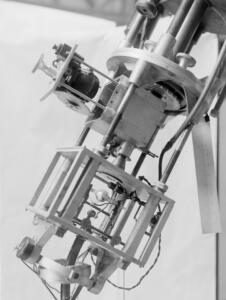Edith Eleanor Cummings (Taylor) (1894-1979)

Savitar Yearbook 1916, University of Missouri

Photometer made by Edith Cummings for the 12-inch refracting telescope (© Regents of the University of California. Courtesy Special Collections, University Library, University of California Santa Cruz. Lick Observatory Photographs)
From Celestial Observers: Sixteen Berkeley Women Doctoral Graduates in Astronomy 1913-1952
By Sheila Humphreys
[1] Charles Peterson. An informal history of the Astronomy Department. University of Missouri, 1981.
[2] https://ui.adsabs.harvard.edu/abs/1920PASP…32Q..67C/abstract
[3] Shane, M. L, & Calciano, E. S. (1969). Mary Lea Heger Shane: The Lick Observatory
[4] Peterson, op. cit., 64.
